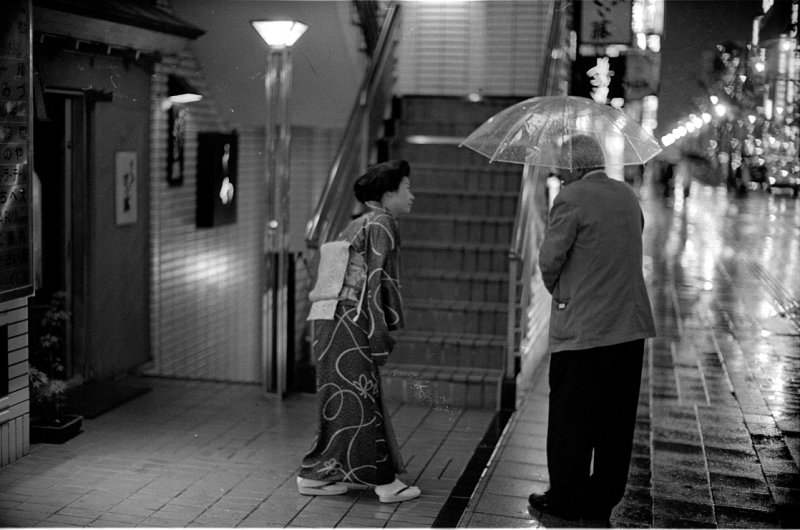mfunnell
Shaken, so blurred
Given that this seems to be the season for personal projects, and because it rather suits my circumstances right now, I recently decided to embark on a "film a week for a year" project to settle myself into a routine that works for me as a way of using film in this modern world (something it seems I've talked about much more than I've actually done, dropping C-41 film off at a minilab rather more often than developing my own silver film).
On the basis of cost and a number of other considerations (which I won't bore you with), I decided this would be based on Tri-X as film and HC-110 as developer, neither of which I'd ever used before. For a bunch of other reasons I settled on this as my basic approach, at least initially:
Tri-X shot at box speed (mostly in my M3 and mostly using my Elmar-M 50mm/f2.8)
HC-110 dilution E at 20 degrees Celsius for 8 minutes, agitating continuously for the first 30 seconds (inversion then rotation, repeated as needed) then for 10 seconds at each minute mark from 1-7; stop by flushing with tap water; fix in Ilford Rapid Fixer 1:9 (also at 20 degrees) for 5 minutes with agitation each minute; flush with tap water then final rinse in distilled water then leave to dry.
Scan with Nikon 5000ED (with SA-30 adaptor).
Photoshop for adjustments then print.
I've run a couple of rolls so far, and I've been pretty happy with the results. The negatives looked good to me. The combination of film, development and scanner settings produced fairly low-contrast results with a full tonal range, which was my intent, with adjustments made in Photoshop to produce the effect I want in final prints.
However, I'm pretty new to all this, and so was wondering if anyone has any hints, tips, suggestions or other commentary they'd like to provide to help me along.
Any such advice would be greatly appreciated.
For what its worth (low-res web images being what they are), here are a couple of example shots from my first couple of rolls:


Thanks in advance for any and all advice.
...Mike
On the basis of cost and a number of other considerations (which I won't bore you with), I decided this would be based on Tri-X as film and HC-110 as developer, neither of which I'd ever used before. For a bunch of other reasons I settled on this as my basic approach, at least initially:
Tri-X shot at box speed (mostly in my M3 and mostly using my Elmar-M 50mm/f2.8)
HC-110 dilution E at 20 degrees Celsius for 8 minutes, agitating continuously for the first 30 seconds (inversion then rotation, repeated as needed) then for 10 seconds at each minute mark from 1-7; stop by flushing with tap water; fix in Ilford Rapid Fixer 1:9 (also at 20 degrees) for 5 minutes with agitation each minute; flush with tap water then final rinse in distilled water then leave to dry.
Scan with Nikon 5000ED (with SA-30 adaptor).
Photoshop for adjustments then print.
I've run a couple of rolls so far, and I've been pretty happy with the results. The negatives looked good to me. The combination of film, development and scanner settings produced fairly low-contrast results with a full tonal range, which was my intent, with adjustments made in Photoshop to produce the effect I want in final prints.
However, I'm pretty new to all this, and so was wondering if anyone has any hints, tips, suggestions or other commentary they'd like to provide to help me along.
Any such advice would be greatly appreciated.
For what its worth (low-res web images being what they are), here are a couple of example shots from my first couple of rolls:


Thanks in advance for any and all advice.
...Mike







